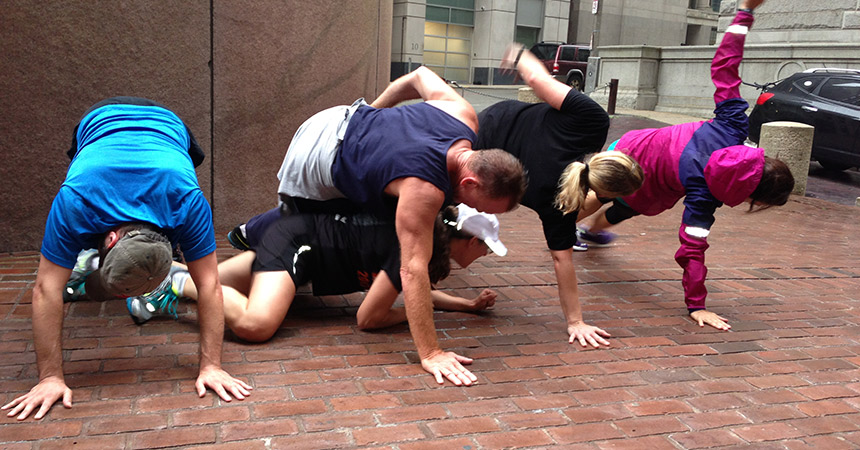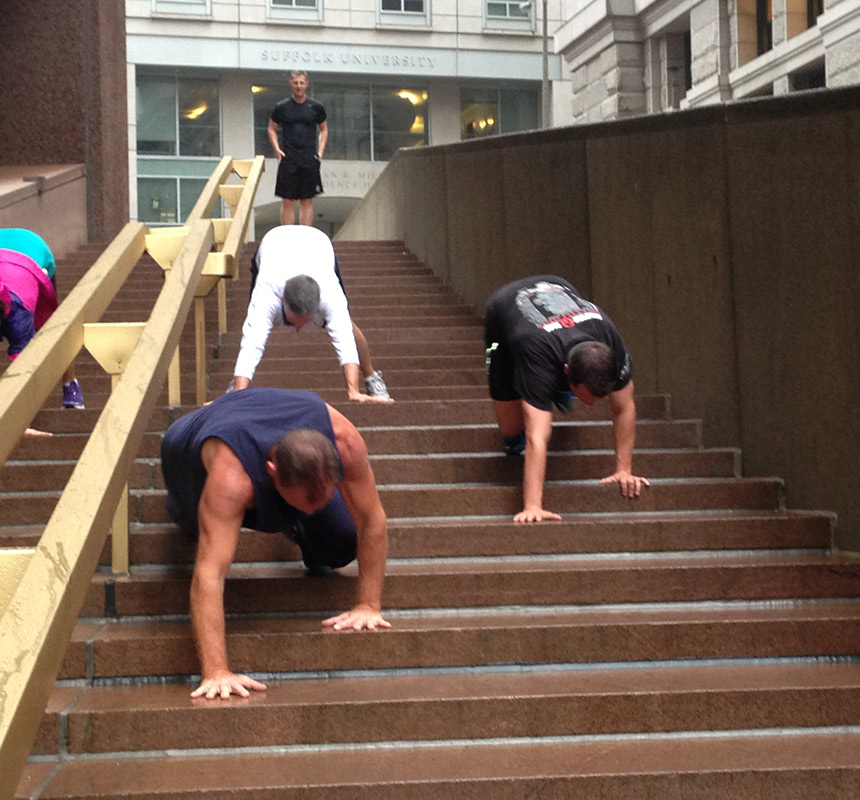Training for Extreme Races

Runners in Boston. Photo provided.
Peter Lavelle, trainer and cofounder of Ultimate Bootcamp, says that there’s a lot more to running the uber-trendy “extreme races” than meets the eye. While it may seem like fun to crawl through mud or climb over walls, many of these races require training and preparation.
“Obstacle races challenge the entire body: upper, lower, core, and cardiovascular capacity. Whether you’re in it to win it, or you’re just hoping to cross the finish line, being prepared for all types of obstacles will mean getting through it more easily, reducing injury risk, and ultimately having more fun,” Lavelle says.
So how exactly do you train for an obstacle or extreme race? Lavelle says that extreme races incorporate a lot of functional body movements: climbing, crawling, jumping, pushing, etc., and a majority of these functions are carried out by using your own body weight. “By training with your own body weight, it will help you train for this type of race environment,” he says.

Let the city be your gym. Photo provided.
Lavelle recommends warming up with a light jog or other cardio activity for about six to eight minutes. Then, do some dynamic stretching, which will reduce the risk of injury and allow for a greater range of motion and prep your muscles for the workout ahead. When training for these kinds of races, Lavelle says that it’s important to incorporate muscle resistance while doing cardiovascular activity, too.
“If a course is a 5K, don’t just go for a 5K run,” he says, “add in periodic exercises that work various body parts.” Choose exercises that use your body weight, and add in stairs or hill workouts, interspersed with muscle work like push-ups or bear crawls will keep your body on its toes, he says.
Here are Lavelle’s tips for training for an extreme race.
- If you’ll be doing a lot of running, run! “If you’ll be crawling under things, then practice crawling. Build those two together; after your initial warm-up and stretch, run for two minutes, then do 60 seconds of bear crawls,” he says. Since you most likely don’t have a mud pit or sand trap in your backyard, it is important to at least practice the moves. When was the last time you really crawled?

Crawling drills. Photo provided.
- You’ll probably be climbing, so find a wall or ledge that’s just a little outside your comfort zone to haul yourself up on or over, and add it to the mix. “Try 60 seconds of getting up and down from it. Jumping will come into play, so jump! Either look for distance (a span over a pit, or gap of some sort), or for height (like jumping a race track hurdle),” Lavelle says.
- On alternate days, mix it up by including some strengthening moves that may not involve climbing, crawling, etc. “Push-ups are a very reliable staple in any exercise regime, as are lunges, triceps dips, and total-core exercises like planks. Whatever exercise(s) you’re doing, don’t stop when it gets too uncomfortable; stop 15 seconds after that,” he says.

All you need is your own bodyweight. Photo provided.

